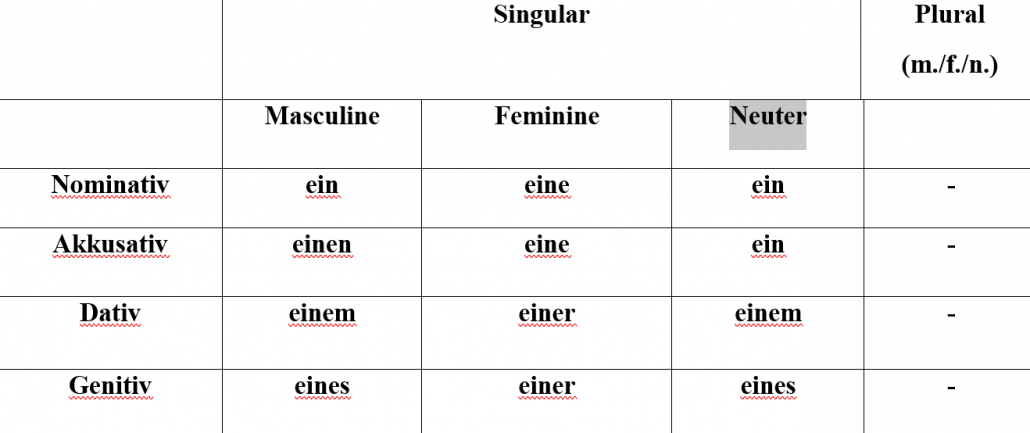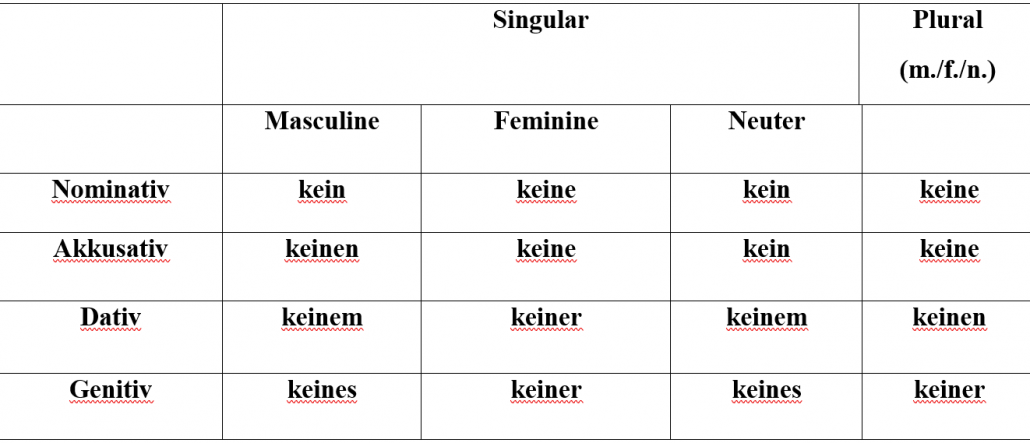The articles and an Introduction to cases
The articles and an Introduction to cases
In German, there is a difference between the definite article and the indefinite article . However , in German language the function of each part of the sentence is determined by the word endings, relations must be made clear by the use of different cases. Therefore, the article must be put into the right case and it needs to be declined. There are 4 types of cases in German : Nominativ, Akkusativ, Dativ, Genitiv
Definite article
If the subject in the sentence is a noun , then it will take the article ‘der’, ‘die’, ‘das’. They all mean ‘the’ in English. Further they decline according to the structure of the sentence and which case the sentence is taking. For example:
Der Tisch ist hier. (The table is here)
In the above sentence, the table is taking the masculine article with it and its in nominative case. As the Subject and the Object are same. In other words, we can say that there is no Object in the sentence. When the Subject and Object are same, then the case is Nominativ. Lets take one more example:
Mein Name ist Sabine. (My name is Sabine)
The definite article

- The article of every noun must be learned.
- The examples in each topic are given of Nominativ case.
Indefinite article
The German indefinite article for the subject of a sentence are ‘ein’ or ‘eine’, both means ‘a’ or ‘an’ in English. ‘Ein’ is used with masculine and neuter nouns whereas ‘eine’ is used with feminine nouns. For example,
Er ist ein Lehrer. (He is a teacher)
Sie ist eine Lehrerin. (She is a teacher). Eine is used with feminine.

- There is no plural for the indefinite article. This thing is also known as “zero article”
Another word is ‘kein’, which means ‘no’ . It declines in the same way as “ein”. For example:
Das ist kein Tisch. (That is not a table)
Das ist keine Uhr. (That is not a watch)

Case
In German, the case is identified by the structure of the senence. The case changes the whole form of determiners, nouns, pronouns and adjectives of the sentence. There are four cases in German:
Nominativ Case : The subject is there in the nominative case.
Akkusativ Case: The direct object is there in the akkusative case.
Dativ Case: The indirect object is there in the dativ case.
Genitiv Case: It is used to show possessions.
- Cases referred from book Essential German Grammar



